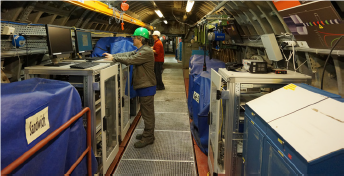
In a new report, the radionuclide metrology team of JRC-Geel gives an overview in the form of a casebook of nuclear science applications performed in a laboratory located 225 m underground.
The reader will learn about interesting and important projects like measuring minute traces of radioactivity in steel from Hiroshima, Pacific seawater samples and natural archives that aim to improve our understanding of biological effects of ionising radiation and climate change.
Other chapters cover the certification of radioactive reference materials used by numerous labs all over the world to validate their measurements and thereby improving nuclear safety for the citizens. The reader will also learn where the least radioactive space on Earth is located, which is the rarest natural radionuclide and other interesting facts.
This JRC techical report seek to give a brief overview and understanding for the many interdisciplinary nuclear science applications that have benefited from JRC's measurements of radioactivity in the underground research facility HADES over the past 20 years.
Related Content
JRC Serving policy & science at the HADES underground research facility - a casebook
Radioactivity monitoring: How the JRC verifies results from monitoring within the European Union
Details
- Publication date
- 2 September 2020
